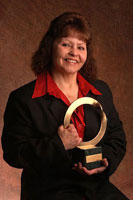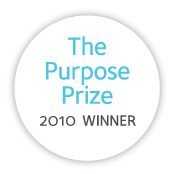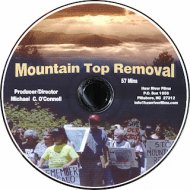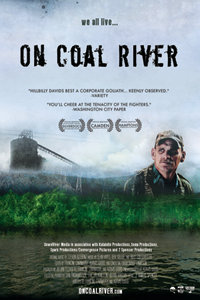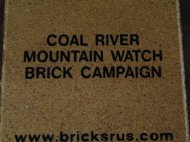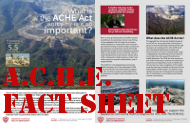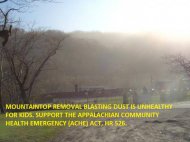
The Jury Is In
Dec 3, 2015
VERDICT: #Blankenship guilty of conspiracy, not guilty on other two counts http://www.wvgazettemail.com/article/20151203/GZ15/151209860
Blankenship guilty of conspiracy, not guilty on other two counts
A federal jury on Thursday found former Massey Energy CEO Don Blankenship guilty of conspiring to willfully violate mine safety standards.
The jury found him not guilty of securities fraud and not guilty of making false statements in the wake of the Upper Big Branch Mine Disaster.
The federal courtroom was filled to capacity with about two dozen onlookers watching on television in a nearby courtroom.
Berger, before announcing the verdict, said there were to be no outbursts with respect to the verdict.
Starting on Oct. 7, the eight women and four men on the jury heard testimony for 24 days in a landmark trial that included 27 witnesses and more than 500 exhibits. Jury selection started on Oct. 1.
Blankenship, 65, faced three felony counts in an indictment that resulted from a nearly five-year federal probe following the April 5, 2010, explosion that killed 29 miners at Massey’s Upper Big Branch Mine in Raleigh County.
The three counts carried a total maximum penalty of 30 years in prison.
While he was not charged with causing the disaster, the accusations focused on rampant violations of basic safety standards – mine ventilation, roof support and dust control – known for decades to be effective in preventing mine explosions.
The charges put on trial a man who worked his way from humble beginnings in Mingo County to be one of the region’s most powerful men – a coal CEO loved by some for his outspoken conservative stances, but vilified by others for an anti-union business model that critics said put coal production ahead of worker safety and the environment.
During the trial, more than a dozen former Upper Big Branch miners testified about working day after day with inadequate fresh air, high levels of dust, and other problems, and yet being ordered to keep “running rcoal.”
Prosecutors introduced evidence that Massey – and the Upper Big Branch Mine in particular – racked up far more serious safety and health violations than other mines operated by other major coal producers. Prosecutors alleged that these violations could easily have been prevented, but Blankenship refused to hire additional miners to do things like spread adequate amounts of crushed limestone or “rock dust” to dilute explosive coal dust generated by mining. The government also noted specific examples where Blankenship refused budget requests for a new ventilation shaft and rock-dusting machine for the Upper Big Branch Mine.
“The defendant ran Massey in a way that violating mine laws was inevitable, and he knew it,” U.S. Attorney Booth Goodwin told jurors during closing arguments on Nov 17. “He knew that you simply could not mine the amount of coal he demanded with the limited amount of people he was willing to devote and the resources that he was willing to devote without breaking the law. And he kept right on doing it.”
Lead defense lawyer Bill Taylor responded that the government had not proven its case to the “reasonable doubt” standard required in criminal cases.
“There’s no proof that Don Blankenship agreed with anyone else, with others, unnamed so far, to commit willful violations of MSHA regulations at the Upper Big Branch Mine,” Taylor said during his closing.
Goodwin responded that the conspiracy charge didn’t require an overt or spoken agreement by Blankenship to take part in the scheme. He compared the concept to a “drug kingpin who doesn’t need to know about every drug sale that is made by one of his street corner drug dealers.”
“The defendant doesn’t need to know the details about every violation of mine safety laws in order to be guilty of conspiracy,” Goodwin said. “He was the kingpin.”
Defense lawyers tried to focus jurors on what they said were Blankenship’s safety innovations – reflective clothing and new safety helmets – that prosecutors dismissed as “whiz-bang so-called innovations.” The defense touted a “hazard elimination program” they said Blankenship came up with to push for fewer safety violations. Prosecutors said the program was little more than “propaganda,” and won a legal motion to keep out of evidence a lengthy video of a Massey meeting held to launch the program.
The defense also repeatedly tried to convince jurors that ventilation violations at Upper Big Branch were largely caused by MSHA forcing the mine, over Massey’s objections, to adopt a different plan for pumping fresh air through the mine. Berger had initially granted a government motion to keep such evidence out of the trial, but repeatedly allowed the defense to get into the matter through cross-examination of government witnesses.
Goodwin tried to dismiss such issues. He said the defense was just trying to “muddy the waters,” and joked with jurors, “Remember all that business about belt air? I’m still lost.”
Goodwin likewise replayed for jurors a recording of a phone call where Blankenship said that if it weren’t for MSHA, Massey would “blow ourselves up.” But during one short cross-examination, defense lawyer Eric Delinsky managed to get the government’s securities expert to say the name “Obama” more than three dozen times to a jury drawn from a state where the president remains very unpopular.
On Nov. 16, after the government completed its case, defense lawyers made the surprise announcement that not only would Blankenship not testify on his own behalf, but also the defense would rest without calling any witnesses of its own.
In his closing argument the next day, Taylor made it clear the defense thought it had done enough by scoring points toward reasonable doubt with its cross-examination of prosecution witnesses.
Taylor especially focused on the testimony of Chris Blanchard, who as president of Performance Coal Co. had run the Upper Big Branch Mine for Massey. Blanchard testified under an immunity agreement with Goodwin’s office and was a key witness before the grand jury that indicted Blankenship. But in a marathon cross-examination that lasted more than a week, Taylor got Blanchard to insist that he did not conspire with Blankenship to violate safety laws or hinder MSHA inspections. Prosecutors tried to minimize any damage by referring in their closing arguments to Blanchard as one of the “yes men” who did whatever Blankenship instructed them to do.
Defense lawyers tried just as hard – but not for nearly as long – to turn to their advantage another key government witness, former Massey ventilation expert Bill Ross. Ross testified on cross-examination that he thought Blankenship wanted to reduce safety violations. He told jurors how the CEO had invited him to lunch to talk about safety and asked him to write a safety speech.
“Ladies and gentlemen, Bill Ross is Exhibit A that Donald Blankenship is innocent,” Taylor told the jury.
Assistant U.S. Attorney Steve Ruby, though, said that it was the documents from Ross – more than the witness himself – that were a key to the prosecution case. The Ross documents, Ruby reminded jurors, show that even after he lunched with Blankenship, Ross didn’t see the sorts of safety improvements he felt were needed.
“The Hazard Elimination Program was like any other,” Ross said in a February 2010 memo shown to jurors. “Just words – and the company wasn’t serious about doing the right thing.”
On the false statement and securities fraud charges, prosecutors alleged that Blankenship orchestrated a Massey statement that falsely said the company did not condone safety violations and strove to comply with all safety rules at all times.
They alleged the statement was issued just days after the Upper Big Branch Mine Disaster to try to stop Massey stock prices – and Blankenship’s personal wealth – from plummeting amid media reports of Massey’s troubled safety record.
“When tragedy happened, and he found the eyes of the world on him and his safety practices, he lied about it to cover it up and keep the money machine going a little longer,” Ruby said.
Taylor complained that the government hadn’t proven these allegations either.
“We didn’t hear a single shareholder testify that he was misled, nor did we hear an SEC official say his agency was,” Taylor said. “We didn’t even hear a witness say Mr. Blankenship wrote the statement or that he revised it.”
At the end of trial, Ruby had asked jurors to picture themselves as one of the miners they heard testify about conditions at Upper Big Branch.
“Picture walking through a mine and seeing everywhere in the tunnels around you coal dust, knowing it’s explosive, knowing there’s an easy way to make it safe by putting down pure white rock dust on top of it, but the people in charge won’t take the time to do it,” Ruby said. “Fast forward a few years to this trial and picture having the defense try to blame the coal miners for the safety violations that happened at UBB.
“The coal miners who went to work every day and kept their heads down and did their best to make a living for their families,” Ruby said. “When they were all but betting in fact just to be given the chance to do what was right, to follow the laws that were designed to keep them safe on the job.”
Staff writers Joel Ebert and David Gutman contributed to this report. Reach Ken Ward Jr. at kward@wvgazettemail.com, 304-348-1702 or follow @kenwardjr on Twitter.
- See more at: http://www.wvgazettemail.com/article/20151203/GZ15/151209860#sthash.5B25PBwq.dpuf

